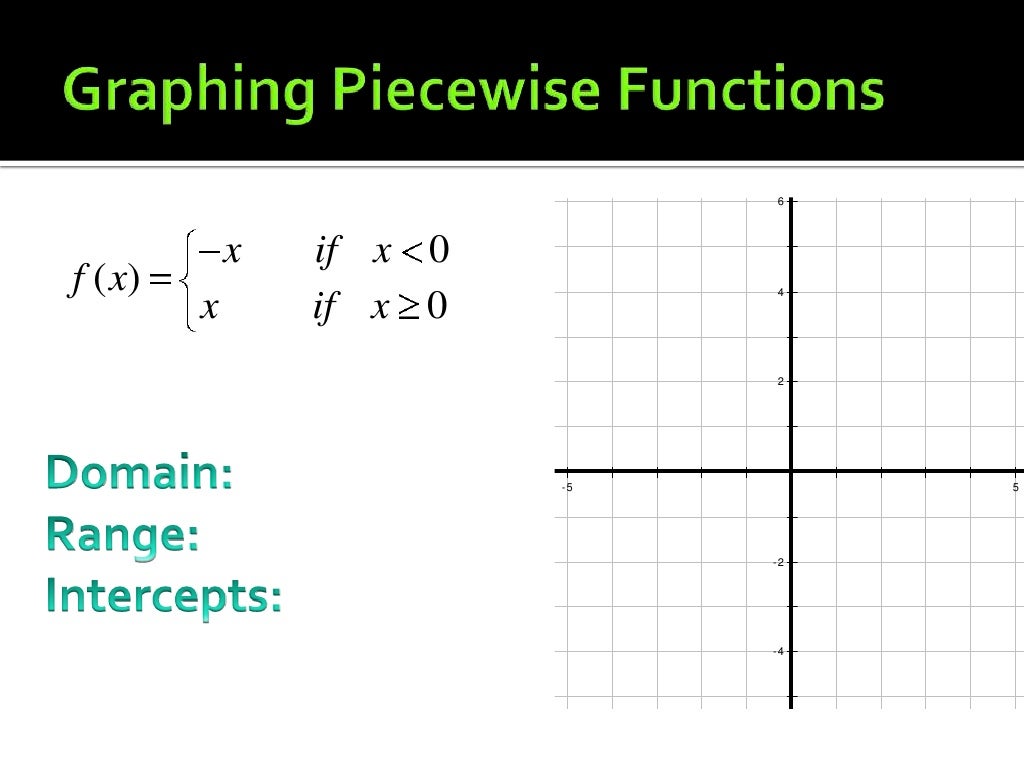

The set of values used to defined this function class _ansforms_nd. The expression that stores the output of the Objects can be updated by assigning to their

Multi-variate piecewise linear function to
#Piecewise function grapher how to#
In this article, we will see a more detailed definition of these functions and we will learn how to obtain their graphs. These functions can be thought of as functions composed of different pieces of two or more functions. Piecewise functions can be defined using the common functional notation, where the body of the function is an array of functions and associated subdomains.These subdomains together must cover the whole domain often it is also required that they are pairwise disjoint, i.e. Piecewise linear relationship between an vector input Piecewise functions are functions that have a different expression for different intervals in their domain. Is a block of variables and constraints that enforce a TransformedPiecewiseLinearFunctionND ( f, input = None, output = None, bound = 'eq' ) īase class for transformed multi-variate piecewiseĪ transformed multi-variate piecewise linear functions The triangulation over the domain of this function property values List, where D is the dimension of points in theįor the vectorized case, the argument x should beĪ (n,D)-shaped numpy array. This method supports vectorizedįunction calls as the interpolation process can beįor the case when a single point is provided, theĪrgument x should be a (D,) shaped numpy array or The values of the piecewise function at each ofĬoordinates in the triangulation points array.Įvaluates the piecewise linear function using values ( numpy.array) – An (npoints,) shaped array of.The points vector that define each simplex Of integers specifying the D+1 indices of simplices: An (nsimplices, D+1) shaped array.points: An (npoints, D) shaped array listing.Our #"range"# starts at #0#, but doesn't include it, and goes to #"infinity"# due to the graph not going below #y=0#, and the lowest point being the #"quadratic"# not touching the #x"-axis"# at the origin, #(0, 0)#, and extends infinitely upwards. Our #"domain"# is #"all real numbers"# due to our #x"-values"# being continuous across the #x"-axis"#, since we have one shaded circle at #x=0# on the linear function, and one shaded circle at #x=3# on the linear function, and the constant function continues on infinitely to the right so, even though the functions visually stop, the graph is still continuous, hence, #"all real numbers."#

Like we said above, the quadratic only appears less than zero, the linear only appears from 0 to 3, and the constant only appears after 3, so: Now let's add the restrictions in the if statements: Just as explained above, we have the parent function of a #color(red)("quadratic")#, a #color(blue)("linear function")#, and a #color(green)("horizontal constant function")#. Let's see what it would look like without the restriction: The final function is the easiest function, a constant function of #y=4#, where we only have a horizontal line at the value of #4# on the #y"-axis"#, but only after #3# on the #x"-axis"#, due to our restriction Tap the down-arrow on the left of the input field to be able to. Change the domain to the equation's given interval. Use the following steps in Graph mode: 1) Enter the equation for the first interval. Our next graph is a normal linear function #"shifted upwards by two"# but only appears from #0 " to " 3#, and includes both, so we will draw the graph from #0 " to " 3#, with #"shaded circles"# on both #0# and #3# Sketching a piece-wise function means sketching the graphs of several functions with applied domains. However, our restriction is #"all "x"-values less than "0#, so we will only draw the left half of the graph, and leave an #"open circle"# at the point #(0,0)#, as the restriction is #"less than 0"#, and does not include #0#. #y=x^2# is a simple parabola, and you are most likely aware that it starts at the origin, #(0,0)#, and extends indefinitely in both directions. It's very important to watch your #"greater/less than or equal to"# signs, as two points on the same domain will make it so that the graph is not a function. It's best to start graphing piecewise functions by reading the "if" statements first, and you'll most likely shorten the chance of making an error by doing so.


 0 kommentar(er)
0 kommentar(er)
